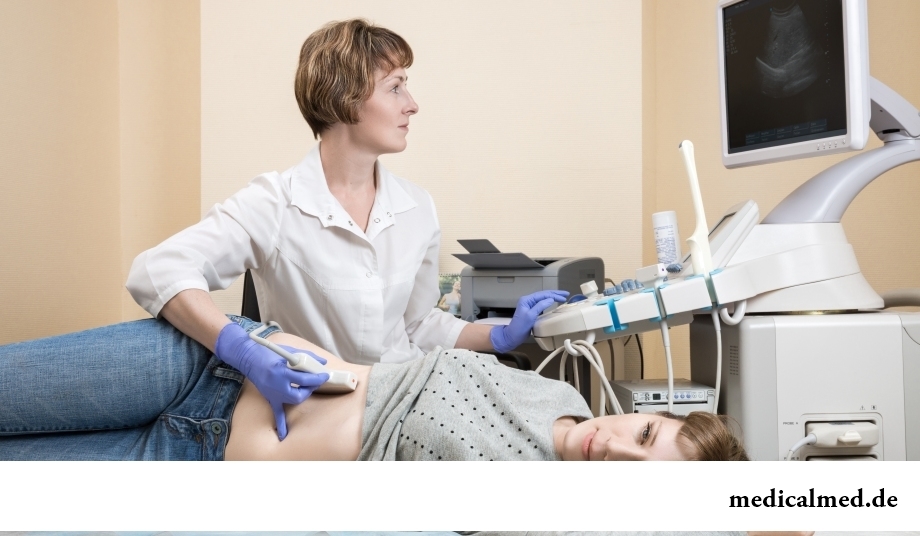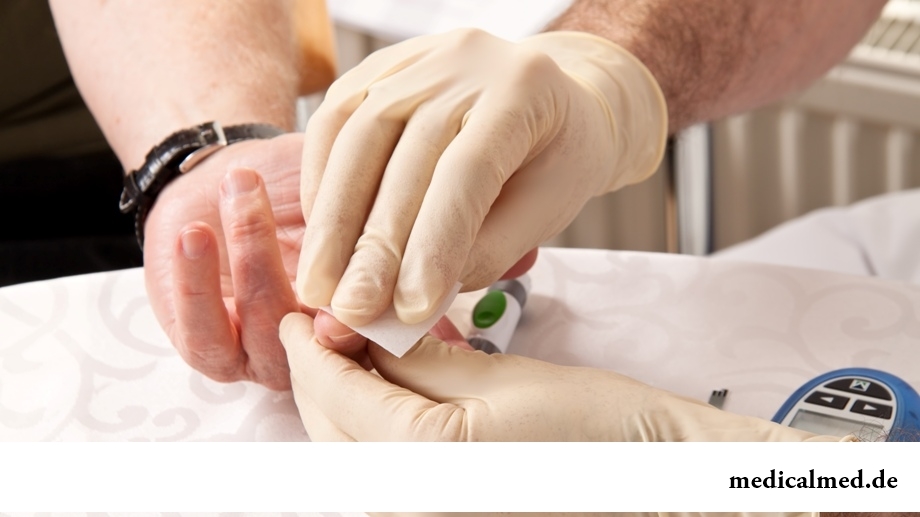





13 reasons of subfebrile temperature
Subfebrile temperature call fervescence to 38 degrees, and subfebrile condition – existence of such temperature over 3 days, and quite often it happens without the visible reasons. Existence of subfebrile condition – a strong indication of disturbances in an organism which can be caused by various reasons: disease, stresses, hormonal failures. Despite the seeming inoffensiveness it is a state at which people often continue to lead a usual life, often is a sign of many diseases including heavy, possessing undesirable effects for health. Let's consider 12 main reasons which can cause temperature increase in an organism to subfebrile values.
1. Acute infectious diseases
The inflammatory process caused by infectious diseases (a SARS, pneumonia, bronchitis, tonsillitis, antritis, otitis, pharyngitis, etc.), is the most frequent reason of subfebrile temperature, and first of all doctors at complaints concerning temperature are inclined to suspect it. Feature of a hyperthermia at diseases of the infectious nature is that it quite often is followed by deterioration in the general state of health (a headache, weakness, a fever), and also in bystry simplification at antipyretic reception.

Subfebrile temperature at children happens at chicken pox, a rubella and other children's diseases in a prodromal stage (i.e. before emergence of other clinical signs) and on recession of a disease.
2. Persistent nonspecific infections
Infectious subfebrile condition is also inherent in some chronic pathologies (quite often in the period of an aggravation):
- To digestive tract diseases (pancreatitis, colitis, gastritis, cholecystitis);
- To inflammations of urinary tract (urethritis, pyelonephritis, cystitis);
- To inflammatory diseases of generative organs (prostate, uterus appendages);
- To not healing ulcers at elderly people and patients with a diabetes mellitus.
For detection of slow infections therapists, as a rule, use the general analysis of urine, and at suspicion of specific body appoint ultrasonography, X-ray and survey of the narrow specialist to an inflammation.

3. Toxoplasmosis
Subfebrile temperature often is a toxoplasmosis symptom – a parasitic disease, a source of infection with which are cats, and also the food stuffs (meat, eggs) which did not undergo sufficient temperature processing. A toxoplasmosis at people with steady immunity proceeds imperceptibly, in a subclinical form, being expressed in weakness, a headache, deterioration in appetite including subfebrile condition which is not stopped by usual antipyretics. Treatment of a toxoplasmosis at healthy people (without immunodeficiency), as a rule, is done without any drugs, however in case of an acute form of the disease proceeding with an internal injury, pathology is eliminated medicamentally.

4. Tuberculosis
Tuberculosis – a heavy infection, the causing damage of lungs, and also urinary, bone, sexual systems, eyes and skin. Subfebrile temperature along with high fatigue, a loss of appetite, sleeplessness can be a symptom of tuberculosis of any localization. The pulmonary form of a disease is defined by fluorography at adults and Mantoux reaction at children that allows to reveal an illness at an early stage. Diagnosis of an extra pulmonary form is often complicated because it is difficult to distinguish tuberculosis from other inflammatory processes in bodies, however in this case it is recommended to pay attention to set of the signs characteristic of a disease: hyperthermia in the evenings, excess perspiration, and also sharp weight reduction.

5. HIV infection
Sometimes the body temperature of 37-38 degrees together with a joint pain, muscles, rash, increase in lymph nodes – a sign of the acute period of the HIV infection causing damage to immune system of the person. The disease incurable at the moment destroys immunity, doing an organism defenseless before any infections – even such harmless from the point of view of a lethal outcome as candidiasis, herpes, a SARS. The eclipse (asymptomatic) period of HIV can last up to several years, however in process of destruction by a virus of cells of immune system symptoms of a disease begin to be shown in the form of candidiasis, herpes, frequent colds, disturbance of a chair – and subfebrile condition including. Timely detection of HIV will allow the carrier to monitor the immune status and by means of antiviral treatment to reduce the maintenance of a virus in blood to minimum, having prevented complications, life-threatening.

6. Malignant tumors
At development in an organism of some tumoral diseases (a monocytic leukosis, a lymphoma, cancer of a kidney and others) there is an emission in blood of endogenous pyrogens – the proteins causing fervescence. Fever in this case will badly respond to treatment antipyretics and is sometimes combined with paraneoplastic syndromes on skin – a black acanthosis of folds of a body (at a breast cancer, digestive organs, ovaries), an erythema to Darya (at a breast cancer and a stomach), and also an itch without rash and any other reasons.

7. A viral hepatitis In and With
Fever at the hepatitis B and C is a consequence of intoxication of an organism caused by defeat of cells of a liver and often is a sign of a slow form of a disease. Together with subfebrile condition hepatitises in an initial stage are followed by an indisposition, weakness, joint pains and muscles, yellowness of skin, and also discomfort in a liver after food. Earlier detection of the disease which is considered as hard to cure will allow to avoid transition of an illness to a chronic stage, so, to reduce risk of emergence of possible complications – cirrhosis or cancer of a liver.

8. Helminthosis (helminthic invasion)
Often small temperature increase together with the increased fatigue and weakness is a symptom of parasitic infections. Subfebrile condition arises owing to organism intoxication waste products of worms and can be combined with digestion disturbances, a meteorism, drowsiness, emaciation (especially at elderly people and children). In the started cases helminthosis can cause heavy illnesses, up to intestinal impassability, dyskinesia of biliary tract, damage of kidneys, a liver, eyes, a brain therefore it is important to reveal a disease at an early stage. In most cases infection for an absolute recovery there are enough one-two courses of protivogelmintny means.

9. Diseases of a thyroid gland
Fervescence as consequences of acceleration of a metabolism in an organism arises also at a hyperthyroidism – the disturbance connected with the strengthened production of hormones of a thyroid gland. Body temperature not less than 37,3 degrees at an illness is accompanied by excess perspiration, impossibility to transfer a heat, thinning of hair, and also the increased uneasiness, tearfulness, nervousness, absent-mindedness. Severe forms of a hyperthyroidism can cause disability and even a lethal outcome therefore in the presence of above-mentioned symptoms it is better for person to see a doctor and to undergo inspection. Anti-thyroid drugs, and also the revitalizing techniques will allow to normalize work of a thyroid gland: hardening, dietotherapy, moderate exercise stresses, yoga. In some cases operation can be required.

10. Iron deficiency anemia
Iron deficiency anemia which can be caused by scanty food, chronic bleedings, digestive tract diseases, pregnancy – an illness which also quite often is followed by subfebrile body temperature. Together with subfebrile condition of a disease frequent dizzinesses, thinning of hair, nails, a xeroderma, drowsiness, decrease in immunity, breakdown accompany. The lack of iron of blood, as a rule, gives in to correction in 2-3 months of treatment, however it is necessary to know that existence of a disease can be an indicator of serious medical problems.

11. Autoimmune diseases
Diseases in the presence of which the immune system ceases to distinguish own cells of an organism are called autoimmune, defining them as alien and attacking. The inflammation of fabrics accompanying this process also causes subfebrile body temperature. Diseases of autoimmune character are, as a rule, various on localization and clinical manifestations as not separate bodies, but fabrics, especially often connecting fabric are exposed to destruction. The pseudorheumatism, a system lupus erythematosus, a disease Krone are considered the most widespread. At the established diagnosis it is necessary to begin immediately immunosuppressor therapy as chronic diseases often lead to various disturbances of work of internals and heavy complications.

12. Psychogenic reasons
Subfebrile condition in fact – manifestation of excessively bystry metabolism on which work also the mentality exerts impact. Stresses, neurosises, strong sincere experiences, especially at the people having morbid depression can lead to fervescence including. For diagnosis of psychogenic deviations the special questionnaire (a hospital scale of a depression and alarm, a scale of emotional excitability, Beck's scale) according to which the test for mental stability of the person is carried out is offered. At confirmation of the diagnosis the psychotherapeutic help is offered to the patient, and also reception of demulcents is appointed.

13. Medicinal subfebrile condition
In certain cases fever of a body can be caused by long medicinal therapy. Ability to increase temperature to subfebrile values thyroxine drugs, antibiotics (ampicillin, lincomycin, penicillin), neuroleptics, some antidepressants, protivoparkinsonichesky and antihistamines, and also narcotic anesthetics have. For elimination of subfebrile temperature doctors practice cancellation or replacement of the drug possessing this reaction.

The most high temperature of a body was recorded at Uilli Jones (USA) who came to hospital with a temperature of 46,5 °C.

Visit of doctors – business not the most pleasant, and many people do not hurry to undergo necessary planned inspections. Such behavior...
Section: Articles about health
It would seem, about it there can be no disagreements: water is necessary for a human body for normal life activity, and about how and when it should be drunk, all know. It turned out that the situation is not absolutely so: for many years occur ве...
Section: Articles about health
Practically each person is familiar with the annoying, pulling, unscrewing pains caused by overcooling of muscles of a back. In certain cases inflammatory process is not limited to discomfort, being followed by emergence of hypostasis, consolidations, temperature increase. At the wrong treatment the acute miositis can lead to a chronic disease or aggravation of other pathologies of a back (vertebral hernia, osteochondrosis) therefore it is important to pay attention to symptoms of an illness in time and to start to...
Section: Articles about health
The pancreas performs two functions in a human body: release of enzymes without which digestion carbohydrate is impossible...
Section: Articles about health
Coffee - the tonic loved by many for the invigorating aroma and deep taste. Having the stimulating effect, coffee increases working capacity, promotes concentration of attention, fights against drowsiness and improves mood. Statistically, about 30% of inhabitants...
Section: Articles about health
Milk and products of its processing by right occupy one of the main places in a diet of the modern person. They contain proteins, necessary for normal life activity, fats, vitamins and microelements, and are an important part of various medical diets....
Section: Articles about health
History of cultivation of a buckwheat contains more than five thousand years. Grain which is received from this plant is used for пригото...
Section: Articles about health
The words "disease" and "patient" not without reason come from one root – "pain". As a rule, symptoms of illnesses thoroughly spoil to patients life. However from this rule there are exceptions. Some diseases are shown by signs which can cause even полож...
Section: Articles about health
The fatigue, sleep debt, disturbances of food, bad mood, vagaries of the weather – all these circumstances badly affect our appearance. Especially the person suffers: skin becomes flabby, loses healthy color, becomes covered by wrinkles, zones of hypostases and dark circles under eyes appear. It is not always possible to be saved from influence of aggressive factors, but we are quite able to minimize its effects. For this purpose usually apply the cosmetics and procedures helping увлаж...
Section: Articles about health
For anybody not a secret that the modern person eats not as his ancestors. For the last 100 years in broad access appeared with...
Section: Articles about health
The next flu epidemic leads to the next panic, from year to year we give in on these manipulations: professionally alarming voice of the announcer in news, reports with calculation of the died patients, an interview with people in white dressing gowns and advertizing of anti-influenza means ра...
Section: Articles about health
The immunity role in growth of the child is invaluable. The proteins-immunoglobulins produced by immune system preserve the child against the diseases capable − owing to an organism weak still − to serve as a stressful factor, to become the reason of many complications and delays in development of the kid. If the immune system weakened, health of the child is under direct threat and needs active actions for strengthening of protective forces of an organism − preferably non-drug....
Section: Articles about health
With age in a human body harmful substances collect. We receive them with food and water, at inhalation contaminated air...
Section: Articles about health
Each of us faces from time to time that other people need the immediate help. We react to it differently: one at once call doctors and police, others rush to victims and try to save them independently. Some at all...
Section: Articles about health
There is a lot of fans of beer in our country. Statistically, on each average Russian (including women and children) in a year about 60 liters of this drink are consumed. It is not a lot of, as in the Czech Republic or Germany, but figure all the same impressive. There is nothing to rejoice here: despite assurances of producers that beer is absolutely harmless, effects of its active consumption cannot be considered positive in any way. Here only part of that negative impact, which popular нап...
Section: Articles about health
On health of the person physicians know about salutary action of animals long ago. About 7 thousand years ago great Hippocrates рекоменд...
Section: Articles about health
Life expectancy in various regions of Earth is not identical. Social stability, economic wellbeing, availability and level of medical care, household comfort, literacy of the population in the field of observance sanitary гигиен exert impact on it...
Section: Articles about health
About 10-15 years ago existence of the computer in the apartment of the Russian was considered as a rarity and office rooms were only at the first stage of equipment by these useful devices. Today practically in each house there is a computer (and often not one), and a regular user is already every our second compatriot. Convenience and efficiency of personal computers are undoubted, but the people working with them daily have to know also about health hazard which they can predstavlit...
Section: Articles about health
Statistically, can only one of ten of our compatriots brag of a decent condition of an oral cavity. On среднестатистич...
Section: Articles about health
New year, wedding, birthday, office party – an occasion to drink at the Russian person will always be. How to reduce a negative impact of alcohol by an organism and to avoid a condition of strong intoxication? The most correct council – to refuse the use spirits напитк...
Section: Articles about health
Each person has easy indispositions which he transfers "standing", trying not to ask for medical care. Arguments at the same time are adduced same: "it is a trifle, itself will pass", "I have too many important issues", "there are no wish to spend time for doctors", etc. At good shape of health, normal working capacity and lack of suspiciousness dislike for complaints to such problems is quite natural. It is not the most correct, but very widespread type of behavior. I am glad...
Section: Articles about health
Among a set of the perfumery and cosmetic goods which are released today the special group is made by the means containing anti-bacterial...
Section: Articles about health
The list of stereotypes of which, apparently, all know strongly includes following: British surely eat porridge for breakfast. Perhaps, not all modern residents of Britain arrive quite so, but for those from them which continue to follow this t...
Section: Articles about health
It is possible to find the extensive range of fruit and vegetables in modern shops. Russians already got used that on counters there is not only a seasonal domestic production, but the vegetables and fruit which are grown up in the countries with more comfortable conditions of cultivation at all seasons of the year. However what we see in shops and in the vegetable markets, is only a small part of those edible plants with which the nature is so rich. Today we want to acquaint the reader with rare and very useful vegetables which on...
Section: Articles about health
The advantage of swimming for the person is so high that this sport is not only the most popular, but also is widely applied in copper...
Section: Slideshow
Such trouble as the milkwoman's attack, at least once in life happened almost to each woman. Prevalence of a disease is explained by the fact that the causative agent of an illness belongs to the so-called opportunistic microflora living on mucous an obol...
Section: Articles about health
The thought that the mass of their body is too big at least once in life visits from 80 to 95% of women. Many women are so obsessed with this idea that constantly try all new and new ways of weight reduction. A considerable part of these techniques is ineffective, and some in general are unsafe for health....
Section: Articles about health
